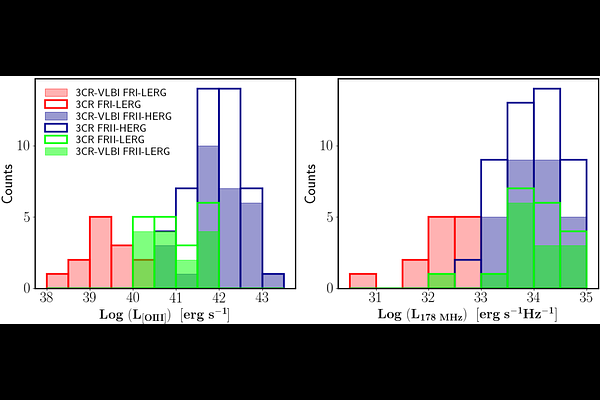Peering into the heart of 3CR radio galaxies. A very long baseline interferometry perspective on optical-radio classifications at parsec scales

Peering into the heart of 3CR radio galaxies. A very long baseline interferometry perspective on optical-radio classifications at parsec scales
P. Grandi, G. Giovannini, E. Torresi, B. Boccardi
AbstractHistorically, luminous edge-brightened Fanaroff-Riley type II (FRII) radio galaxies have been associated with radiatively efficient cold accretion disks. In contrast, faint edge-darkened Fanaroff-Riley Type Is (FRIs) are sustained by hot, inefficient accretion flows. However, several sources deviate from this paradigm, showing FRII morphologies and radiatively inefficient accretion. Three hypotheses have been proposed to explain the observations: (1) The evolutionary scenario: initially strong accretor FRIIs switch to having a hot inefficient flow due to the depletion of available material. (2) The environment scenario: radio structures are mainly shaped by the environment.\ (3) The engine scenario: both radiatively efficient (FRII-HERGs) and inefficient flows (FRII-LERGs) can expel jets powerful enough to maintain collimation up to kiloparsec distances from the nucleus. We explored these scenarios by studying the jet properties of 3CR radio galaxies using very long baseline interferometry data from the Fundamental Radio Catalog to investigate the distinction between FRII-LERGs and FRII-HERGs. In particular, we analyzed the 8 GHz luminosity ($L_{8GHz}$) distribution across different optical-radio classes at milliarcsecond scales. Our results favor the engine scenario. The separation between different radio-optical classes is evident even on parsec scales. In particular, the separation between FRII classes with different accretion rates occurs near the central engine before the jets reach kiloparsec-scale distances.